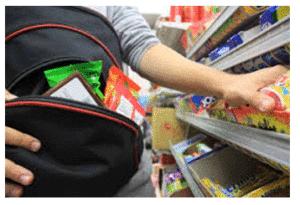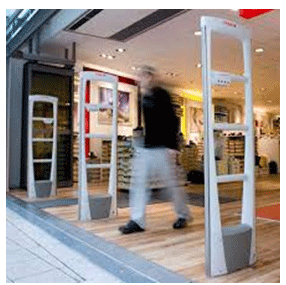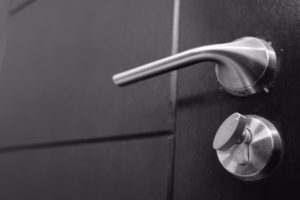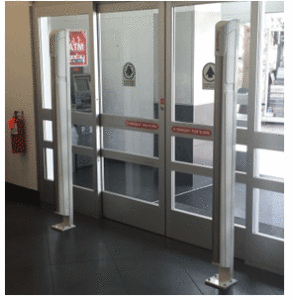We have begun to see a breakdown in the protection we used to be able to depend on. Recent decisions in California and other areas are basically decriminalizing shoplifting.
These changes in the law by out of touch Legislatures are having a devastating impact on retailer’s and society as a whole. Law makers are not addressing the real problems, only the results. People are able to get away with crime and this will have a further reaching impact on future generations and our society as a whole. 
But today it is causing shoplifting in those geographical areas to rise substantially, impacting the retailer’s bottom line and the consumer’s pocket book.
What are we to do? We can no longer depend on the criminal laws to protect us. The politicians have lost their nerve, their minds and the understanding on why they were elected. But the real problem is that the brave and highly skilled Law Enforcement Officers that are there to protect us all, are barely able to contain violent crime let alone shoplifting. Budget cuts, Democrats, Republicans…… are all to blame.
But you have solutions. The first is as professionals, we know that we can only depend on ourselves. So let’s solve this like any other business problem we face on a daily basis. The real solution has three elements. The good news is that you do have control of all three.
1. How vulnerable have you made yourself?
 Step back and take a hard look. Or better yet ask someone you trust to do that. A friend, another business owner…… they really do not need to have any special skills. You should look at your store from the prospective of the shoplifter. If you were going to steal, how would you do it? Do you have dark areas, high shelving, hidden spots that would make the thief comfortable? Is your store unkempt, dirty and not stocked in an organized way? Shoplifters are attracted to these environments. If you are presenting that look, then the shoplifter probably knows you are not able to keep up or simply do not care. This will also breed more shoplifting as word gets around that YOUR STORE is an easy mark.
Step back and take a hard look. Or better yet ask someone you trust to do that. A friend, another business owner…… they really do not need to have any special skills. You should look at your store from the prospective of the shoplifter. If you were going to steal, how would you do it? Do you have dark areas, high shelving, hidden spots that would make the thief comfortable? Is your store unkempt, dirty and not stocked in an organized way? Shoplifters are attracted to these environments. If you are presenting that look, then the shoplifter probably knows you are not able to keep up or simply do not care. This will also breed more shoplifting as word gets around that YOUR STORE is an easy mark.
2. Equipment
I am not going to hit this one hard. You know that we sell and install the finest Electronic Article Surveillance (EAS) equipment made worldwide. Checkpoint Systems must be part of your strategy. That is why you see it in almost every major retailer.
3. Your Staff
 Are they asleep at the switch? Do they care? Have you trained them how you want the shoplifting deterrence program in your store to work and what their roll in it is? This is not something you can put off. It’s like saving money in an account. You got to start. If you are one of Loss Prevention Systems Customers already, then you know this. That is why we conduct live, personalized shoplifting prevention and loss prevention training for our customers. We do this as reasonably often as you need it, free of charge.
Are they asleep at the switch? Do they care? Have you trained them how you want the shoplifting deterrence program in your store to work and what their roll in it is? This is not something you can put off. It’s like saving money in an account. You got to start. If you are one of Loss Prevention Systems Customers already, then you know this. That is why we conduct live, personalized shoplifting prevention and loss prevention training for our customers. We do this as reasonably often as you need it, free of charge.
These three elements put and keep YOU in control. But you have to start now before it gets worse. And if the trend continues, it will.
 This is the best time for retailers. We make a good chunk of our profits during the last 3 months of our fiscal year. Walk into any major retailer right now and you’ll already see a litany of holiday themed gifts, home décor and all things red and green. We also tend to beef up our staff this time of year as well. Some of us hire part-time works, some may even add a full-time position or two and a great many of us will employ temporary workers. The threat of employee theft also peaks around this time as well.
This is the best time for retailers. We make a good chunk of our profits during the last 3 months of our fiscal year. Walk into any major retailer right now and you’ll already see a litany of holiday themed gifts, home décor and all things red and green. We also tend to beef up our staff this time of year as well. Some of us hire part-time works, some may even add a full-time position or two and a great many of us will employ temporary workers. The threat of employee theft also peaks around this time as well.  As I sit here on this Halloween night, thinking about how great it was when I was a kid to pillage the neighborhoods for candy and treats, I can’t help but also think about the next 60 days. The real fright comes now for all of us in the retail game. We’ve got so little time to do so very much. We all have new receipts pouring in, plan-o-grams that need setting, bulk stacks that need stacking and bins that need filling; all with the mad hopes of grabbing every possible dollar from now until December 24. A big part of that plan, for most, is hiring temporary help to get us through. Have you ever thought about how these temporary workers can impact your LP goals? With a little training and guidance, they can be one of your greatest holiday assets.
As I sit here on this Halloween night, thinking about how great it was when I was a kid to pillage the neighborhoods for candy and treats, I can’t help but also think about the next 60 days. The real fright comes now for all of us in the retail game. We’ve got so little time to do so very much. We all have new receipts pouring in, plan-o-grams that need setting, bulk stacks that need stacking and bins that need filling; all with the mad hopes of grabbing every possible dollar from now until December 24. A big part of that plan, for most, is hiring temporary help to get us through. Have you ever thought about how these temporary workers can impact your LP goals? With a little training and guidance, they can be one of your greatest holiday assets. Ever given any thought to your receiving area and your back door? How often do you open it and walk away? Do you require a manager be present when it’s open, or do you “trust” your warehouse crew with a key? Have you ever considered that an unattended back door could not only cause shrink, but also compromise the safety of your customer and employees? If you answered yes to any of those questions, you may have a problem.
Ever given any thought to your receiving area and your back door? How often do you open it and walk away? Do you require a manager be present when it’s open, or do you “trust” your warehouse crew with a key? Have you ever considered that an unattended back door could not only cause shrink, but also compromise the safety of your customer and employees? If you answered yes to any of those questions, you may have a problem. It is not surprising that CVS is once again the recipient of a lawsuit.
It is not surprising that CVS is once again the recipient of a lawsuit.

 A good loss prevention plan starts with focusing on the basics. One of the basics is to monitor high risk merchandise. For a variety of reasons some items are stolen more often than others. It makes sense that they should be given extra attention and protection.
A good loss prevention plan starts with focusing on the basics. One of the basics is to monitor high risk merchandise. For a variety of reasons some items are stolen more often than others. It makes sense that they should be given extra attention and protection. We are getting ready for an increase in customer traffic. Is your Checkpoint System ready? Are you having false or phantom alarms? Is the system working properly? Have you had your system tuned or a Preventative Maintenance (PM) conducted in the last year or even 5 years?
We are getting ready for an increase in customer traffic. Is your Checkpoint System ready? Are you having false or phantom alarms? Is the system working properly? Have you had your system tuned or a Preventative Maintenance (PM) conducted in the last year or even 5 years?